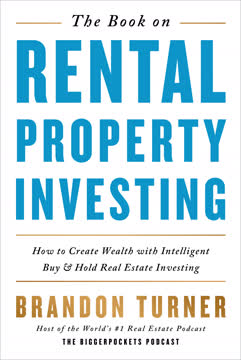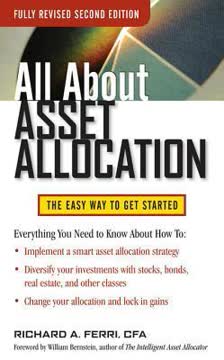Key Takeaways
1. Passive investing outperforms active management over the long term
The evidence powerfully confirms that, at least in the mutual fund industry, the holy grail doesn't exist.
Overwhelming evidence. Decades of academic research and real-world performance data demonstrate that passively managed index funds consistently outperform actively managed funds over long periods. This is primarily due to lower costs and broader diversification. Studies show that only about one-third of active funds beat their benchmarks in any given year, and this percentage decreases over longer time horizons.
Simple arithmetic. The aggregate return of all investors must equal the market return minus costs. Since passive funds have lower costs than active funds, they mathematically must outperform the average active fund over time. This "zero-sum game" concept, articulated by Nobel laureate William Sharpe, forms the foundation of the case for passive investing.
2. Index funds offer superior diversification and lower costs
Wasting beneficiaries' money is imprudent. In devising and implementing strategies for the investment and management of trust assets, trustees are obliged to minimize costs.
Broad market exposure. Index funds provide investors with exposure to entire market segments or asset classes, eliminating the risk of underperforming due to poor stock selection. This broad diversification reduces unsystematic risk without sacrificing returns.
Cost advantage. The expense ratios of index funds are typically a fraction of those charged by actively managed funds. This cost difference compounds significantly over time, leading to substantial outperformance. Additionally, index funds have lower turnover, resulting in greater tax efficiency for taxable investors.
- Average expense ratio for active equity funds: 1.0% - 1.5%
- Average expense ratio for index equity funds: 0.1% - 0.3%
3. The odds of selecting winning active funds are low and diminish over time
Past performance is not an indication of future returns.
Persistence of performance. Studies consistently show that past outperformance does not reliably predict future success. Even funds with strong track records often fail to maintain their edge, making it extremely difficult for investors to identify future winners.
Compounding probabilities. The likelihood of selecting multiple outperforming funds and maintaining that selection over time is vanishingly small. For example:
- Probability of selecting a single outperforming fund over 1 year: ~33%
- Probability of selecting 5 outperforming funds over 5 years: ~1%
- Probability of selecting 10 outperforming funds over 10 years: <0.1%
4. Asset allocation is more important than individual security selection
At the 50,000-foot level, asset allocation is all about developing overall return goals while controlling risk.
Primary driver of returns. Research indicates that asset allocation decisions account for the vast majority (often cited as 90% or more) of a portfolio's long-term performance variability. This far outweighs the impact of security selection or market timing.
Risk management. Proper asset allocation allows investors to tailor their portfolio's risk level to their specific goals and risk tolerance. It provides a systematic approach to diversification across different asset classes, reducing overall portfolio volatility.
Key asset allocation considerations:
- Time horizon
- Risk tolerance
- Investment goals
- Correlation between asset classes
5. Market timing and tactical asset allocation rarely succeed
Investors require unusual self-confidence to ignore the widely hyped non-core investments and to embrace the quietly effective core investments.
Difficulty of prediction. Consistently predicting short-term market movements is virtually impossible, even for professional investors. Studies show that most attempts at market timing result in underperformance compared to a buy-and-hold strategy.
Behavioral pitfalls. Market timing often leads investors to buy high and sell low, driven by emotions rather than rational analysis. This tendency is exacerbated during periods of market volatility.
Common market timing mistakes:
- Overreacting to short-term news
- Chasing past performance
- Failing to rebalance systematically
- Underestimating the impact of trading costs and taxes
6. Passive investing aligns with fiduciary duty for trustees and advisors
Low-cost passive strategies suit the overwhelming number of individual and institutional investors without the time, resources, and ability to make high quality active management decisions.
Prudent investor rule. Fiduciaries are legally obligated to act in the best interests of their clients or beneficiaries. Passive investing, with its focus on low costs, broad diversification, and evidence-based approach, aligns closely with these fiduciary responsibilities.
Risk management. By eliminating manager risk and reducing costs, passive strategies help fiduciaries fulfill their duty to minimize unnecessary risks and expenses. This approach is particularly relevant for trustees overseeing pension funds, endowments, and other long-term institutional portfolios.
7. A disciplined, low-cost approach is key to long-term investment success
Investing for the rest of your life and the lives of your loved ones is serious business.
Consistency is crucial. Maintaining a disciplined investment approach, regardless of short-term market fluctuations, is essential for long-term success. This involves sticking to a well-defined asset allocation and regularly rebalancing the portfolio.
Compounding of costs. Even small differences in fees can have a substantial impact on long-term returns due to the power of compounding. By minimizing costs through passive investing, investors can significantly improve their odds of reaching their financial goals.
Impact of fees on a $100,000 investment over 30 years (assuming 7% annual return):
- 0.1% annual fee: Final value = $741,344
- 1.0% annual fee: Final value = $574,349
- Difference: $166,995 (22.5% less wealth)
8. Behavioral biases often lead investors astray from rational decision-making
We tend to feel brave when prices are going up, which means that it's not the ideal time to decide our risk tolerance level.
Common cognitive errors. Numerous psychological biases affect investment decisions, including:
- Overconfidence
- Loss aversion
- Recency bias
- Confirmation bias
- Herd mentality
Mitigating biases. Passive investing helps investors overcome many of these biases by providing a systematic, rules-based approach to investing. It removes the temptation to make emotional decisions based on short-term market movements or the illusion of skill in security selection.
9. Passive strategies benefit both individual and institutional investors
Trustees who oversee other people's money are under strict legal requirements to act in the best interest of the beneficiaries to which they are responsible.
Applicability across investor types. The benefits of passive investing apply to a wide range of investors, from individuals saving for retirement to large institutional investors managing pension funds or endowments.
Scalability and simplicity. Passive strategies are easily scalable and can be implemented effectively for portfolios of any size. They also simplify the investment process, reducing the need for complex analysis and frequent decision-making.
Benefits for different investor types:
- Individuals: Lower costs, improved diversification, tax efficiency
- Pension funds: Reduced liability risk, improved transparency, lower fees
- Endowments: Consistent long-term performance, easier governance
- Advisors: Scalable business model, alignment with fiduciary duty
10. The investment industry often conflicts with investors' best interests
Wall Street is full of promises.
Misaligned incentives. Many financial institutions profit from complexity and frequent trading, which are often at odds with investors' best interests. This can lead to the promotion of high-cost, actively managed products that are unlikely to outperform over the long term.
Education and transparency. Investors need to be aware of potential conflicts of interest and seek out advisors who prioritize their clients' interests. Passive investing provides a transparent, low-cost alternative that aligns more closely with investors' goals.
Key considerations when evaluating financial advice:
- Fee structure (commission-based vs. fee-only)
- Fiduciary status of the advisor
- Investment philosophy and approach
- Transparency of costs and potential conflicts
Last updated:
FAQ
What's The Power of Passive Investing about?
- Focus on Passive Strategies: The book advocates for passive investing through low-cost index funds and ETFs, arguing they are more effective than active management.
- Historical Context: It traces the evolution of investing from active management to the rise of index funds, starting with Vanguard's first index fund in 1976.
- Evidence-Based Approach: Richard A. Ferri supports his arguments with extensive research and performance studies demonstrating the advantages of passive investing.
Why should I read The Power of Passive Investing?
- Comprehensive Guide: It serves as a thorough guide for both individual investors and financial professionals, offering insights into passive investing benefits.
- Research-Backed Arguments: Ferri presents compelling evidence showing how most actively managed funds fail to outperform their benchmarks after fees.
- Practical Advice: Readers gain practical strategies for constructing a passive investment portfolio aligned with their financial objectives.
What are the key takeaways of The Power of Passive Investing?
- Passive Over Active: Passive investing strategies, particularly through index funds, generally outperform active management due to lower costs and market efficiency.
- Cost Matters: Fund expenses significantly impact returns, with Ferri stating that active management often underperforms passive management net of costs.
- Behavioral Insights: Investor behavior often leads to poor timing decisions, reinforcing the case for a disciplined, passive approach.
What are the best quotes from The Power of Passive Investing and what do they mean?
- “The name of the game is to be the best.”: Reflects the flawed mindset of active management, as most managers fail to consistently outperform the market.
- “Odds are you’ll earn well below market returns...”: Emphasizes the unlikelihood of consistently selecting winning active funds, advocating for a passive strategy.
- “Passive investing IS power investing!”: Encapsulates the book's core message that passive investment strategies can lead to greater financial success.
What is passive investing, as defined in The Power of Passive Investing?
- Low-Cost Strategy: Involves investing in low-cost index funds and ETFs that aim to replicate market returns rather than outperform them.
- Market Efficiency: Based on the belief that markets are generally efficient, making it difficult for active managers to consistently beat the market.
- Long-Term Focus: Advocates for a long-term investment horizon, suggesting passive strategies help achieve financial goals with less risk and effort.
How does The Power of Passive Investing compare active and passive management?
- Performance Metrics: Numerous studies show actively managed funds underperform their benchmarks after fees, while passive funds match market returns.
- Survivorship Bias: Discusses how poorly performing funds close, skewing the perception of active management success.
- Cost Efficiency: Emphasizes that passive funds have lower expense ratios, contributing to superior performance over time compared to active funds.
What are the main arguments against active management in The Power of Passive Investing?
- Inconsistent Performance: Only about one-third of active managers outperform their benchmarks, and those who do often change from year to year.
- High Costs: Fees associated with active management often negate any potential outperformance.
- Behavioral Pitfalls: Investor behavior, such as chasing past performance, often leads to poor investment decisions.
How does The Power of Passive Investing address investor behavior?
- Behavioral Finance Insights: Discusses how emotional and psychological factors lead to poor decisions, such as buying high and selling low.
- Encouraging Discipline: Advocates for a disciplined approach, emphasizing the importance of sticking to a passive strategy.
- Education and Awareness: Believes educating investors about the pitfalls of active management can help them make better financial decisions.
What is the five-step process for passive portfolio management outlined in The Power of Passive Investing?
- Determine Objectives: Understand financial goals, risk tolerance, and time horizon to create a tailored strategy.
- Analyze Asset Classes: Study various asset classes to estimate long-term risks and returns.
- Create Asset Allocation: Develop a strategic allocation that aligns with objectives, balancing risk and return.
- Select Securities: Choose low-cost index funds or ETFs that best represent selected asset classes.
- Implement and Maintain: Fully implement the plan and maintain allocation through regular rebalancing.
How does The Power of Passive Investing suggest handling market volatility?
- Stay the Course: Maintain a long-term perspective during market fluctuations, avoiding impulsive decisions.
- Rebalance Regularly: Regular rebalancing helps maintain desired asset allocation and can enhance returns.
- Emotional Discipline: Sticking to a passive strategy and avoiding emotional reactions improves long-term success.
What are the advantages of using index funds and ETFs, according to The Power of Passive Investing?
- Cost Efficiency: Index funds and ETFs typically have lower expense ratios, enhancing long-term returns.
- Broad Diversification: Provide broad market exposure, allowing easy diversification to reduce risk.
- Simplicity and Transparency: Straightforward to understand and track, with performance tied directly to the underlying index.
How does The Power of Passive Investing recommend changing from an active to a passive investment strategy?
- Education and Awareness: Understanding the benefits of passive investing helps make informed decisions.
- Commitment to Strategy: Encourages commitment to a passive strategy, avoiding the temptation to switch back to active management.
- Seek Support: Suggests seeking guidance from trusted sources or advisors who advocate for passive investing.
Review Summary
The Power of Passive Investing receives positive reviews for its comprehensive evidence supporting passive investing over active management. Readers appreciate the book's thorough examination of indexing entire portfolios, rather than just individual funds. Many find it informative and well-structured, reinforcing the benefits of passive investing for long-term success. Some reviewers note repetitiveness but still value the content. The book is praised for its accessible explanations and wealth of supporting data, making it a valuable resource for both novice and experienced investors interested in passive investment strategies.
Similar Books










Download PDF
Download EPUB
.epub digital book format is ideal for reading ebooks on phones, tablets, and e-readers.






